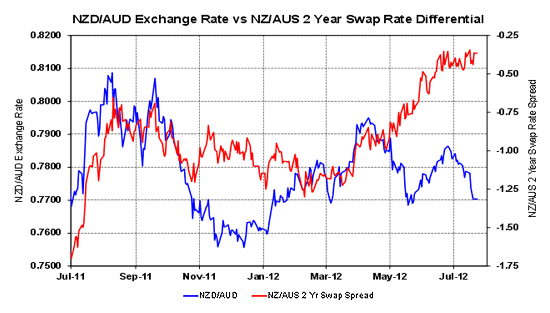
 By Roger J Kerr
By Roger J Kerr
Keeping up with the Aussies or failing to keep up with the Aussies is often a central theme in political and economic arguments in New Zealand.
The continuous comparisons to Australia are not unexpected or surprising as New Zealanders have always been enticed to try their luck in the much bigger economy right next door.
At the household level, as well as at the micro and macro-economic level the comparisons are inevitable.
We also seem to have an unfortunate inferiority complex when dealing with the big brother across the Tasman.
Their enormous mining wealth and success as an economy drives the aggressive/confident/superior approach we expect and receive from our Aussie counterparts. It is also no surprise that our currency follows their currency against the US dollar the majority of the time. Despite the economic differences which we understand (dependence on mining commodities versus dependence on agricultural commodities), the rest of the world see the two economies as one and thus trade the currencies as one.
The relative value of the NZ dollar against the AUD is therefore important for the NZ economy as they are our largest trading partner. While you see the odd moan about the NZ dollar being overvalued, paradoxically it continues to trade at historical and cyclical lows against the Australian dollar at 0.7700.
The sole reason the NZD is valued at a low point against the AUD is that we have continued to have super-low interest rates as a monetary policy setting since the 2009 GFC, whereas the Aussies pushed their interest rates up to be well above ours in 2009/2010.
The Reserve Bank of Australia has since lowered rates, however last week they signalled that they were through with any more cuts.
The AUD has therefore out-performed the NZD against the USD, driving the NZD/AUD cross-rate lower from above 0.7800 to 0.7700.
The interest rate differential has always been the dominant driver of the NZD/AUD cross-rate value and will continue to do so going forward. Taking the view that NZ interest rates will eventually have to increase when stronger GDP growth forces the RBNZ to recognise the future inflation risks, the current 0.40% gap between NZ and Aussie two-year swap interest rates (NZ below Aussie) will ultimately move to zero and NZ rates moving above Aussie interest rates.

The NZD/USD exchange rate dislocated somewhat from the AUD/USD rate in May when the European panic caused the NZD to sell-off further and faster, causing the NZD/AUD cross to drop to 0.7700. While the interest rate differential (see chart) still suggests a NZD/AUD cross-rate nearer 0.8100 at this time, the NZD has returned to 0.7700 over this last week due to a lower than forecast CPI inflation number and the RBA coming off their easing bias.
The rapid appreciation in the AUD against the USD from below $1.0000 to above $1.0400 over the last two weeks appears to be more based on hot air than improvement in Australia’s economic fundamentals.
While the global CRB commodities index has rebounded up 12% from lows of 270 to 304 over that period, it has been entirely due to oil and grain prices increasing for their own reasons, not industrial and precious metal commodity prices moving up that the Australian economy depends upon.
Both the AUD and NZD have benefitted from Asian central banks and sovereign wealth funds allocating higher investment weightings to the antipodean currencies over recent times, however the AUD gains appear well overdone. The speculators who have been buying AUD’s recently may be tempted to take profits before they go away for their northern hemisphere summer holidays. Any recoil in the AUD back to $1.0000 against the USD would bring the Kiwi back by two cents to 0.7800 and push the NZD/AUSD cross-rate back to 0.7800 as well.
Chinese demand for base metals such as iron ore and coal drives these global commodity prices and they in turn drive the AUD/USD exchange rate. Latest economic data and anecdotal evidence out of China would suggest that this demand for imported raw materials is slowing a bit quicker than what most expected. Yet again, Chinese manufacturing data next week on Wednesday 1 August will be absolutely key for the AUD movements, as will US employment data on Friday 3 August. An improvement in jobs growth in the US will reduce the probability of a QE3 monetary loosening and be supportive of the USD (NZD and AUD negative).
--------------------------------------------------------------------------------------------------------------------------------
To subscribe to our daily Currency Rate Sheet email, enter your email address here.
--------------------------------------------------------------------------------------------------------------------------------
* Roger J Kerr runs Asia Pacific Risk Management. He specialises in fixed interest securities and is a commentator on economics and markets. More commentary and useful information on fixed interest investing can be found at rogeradvice.com

We welcome your comments below. If you are not already registered, please register to comment
Remember we welcome robust, respectful and insightful debate. We don't welcome abusive or defamatory comments and will de-register those repeatedly making such comments. Our current comment policy is here.